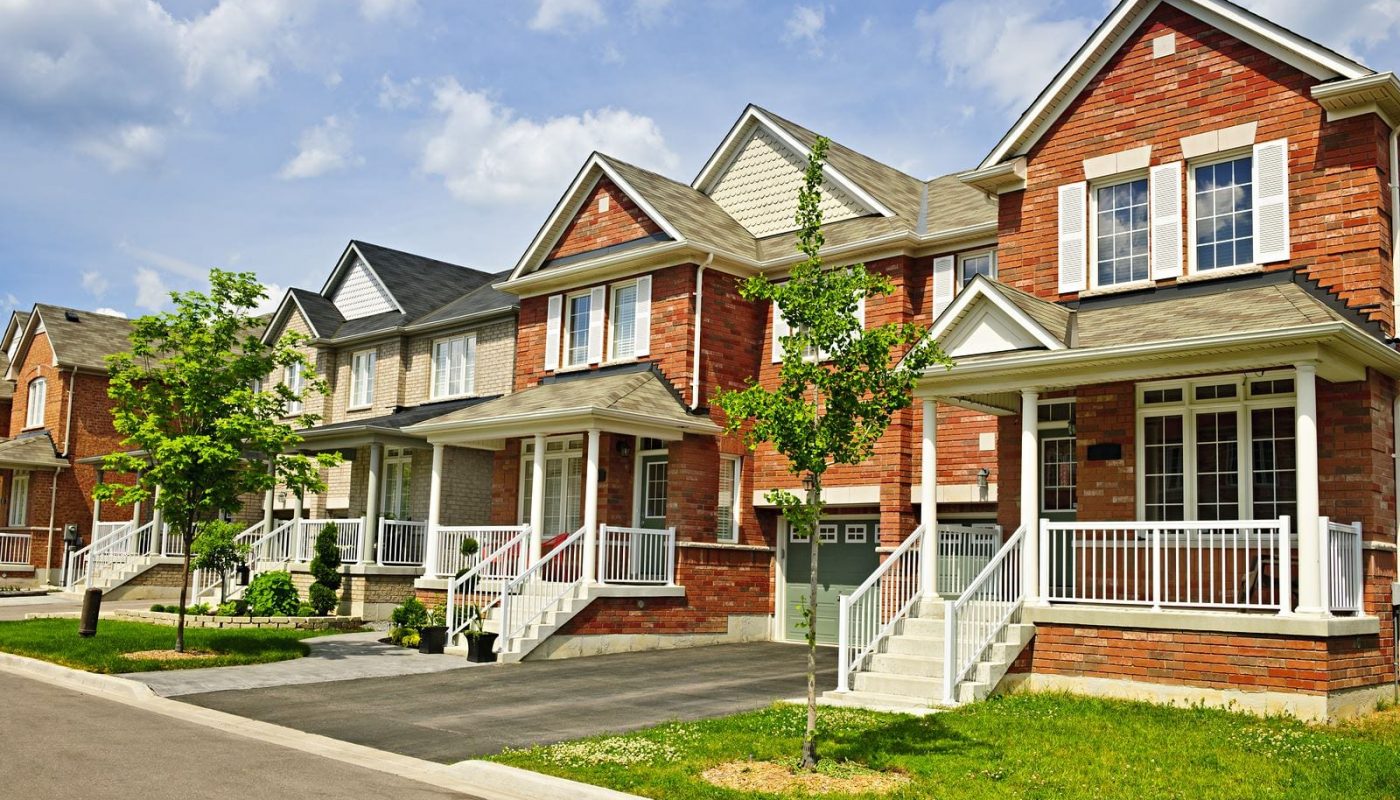Residential real estate involves purchasing property that is used for living purposes. Typical examples include single-family homes, condos, townhouses, and multi-family units. Investors usually choose this sector because it provides a tangible asset. The asset itself can be seen, touched, and used as collateral. Investors appreciate that the market tends to recover over time. Short-term fluctuations may occur, but long-term growth is often observed. Additionally, rental income can provide predictable cash flow. The income may supplement other earnings and pave the way for financial independence. Many investors also see residential real estate as a hedge against inflation. When prices rise, rental rates often increase as well. Moreover, real estate investment provides portfolio diversification that can limit the risk from other volatile assets.
Investors are drawn to this asset class because they can control many aspects of their investments. They choose properties in growing neighborhoods and can make value-add improvements. These improvements enhance the market value of the property. In some cases, well-managed properties perform better than the stock market. However, the process demands diligent research and management. Investors must understand local market trends, demographic changes, and economic indicators. This article covers these topics while acknowledging the complexities of the market. You will also learn that some factors lie beyond control. Even with risks, many investors report excellent returns when managed correctly. In addition, professional advice is often recommended when entering the market.
Advantages of Investing in Residential Real Estate

Residential real estate investment has many advantages that make it appealing. Investors enjoy the benefits of both income and potential value appreciation. Steady cash flow is a primary advantage due to rental income. Tenants pay monthly, which provides consistent revenue. This income may cover the mortgage payments and generate surplus cash. Many investors use the income to reinvest or pay down debt. Furthermore, rental income is partly insulated from economic downturns because people always need a place to live.
Additionally, residential real estate is known to hedge against inflation. As inflation rises, rents and property values often increase together. This makes real estate a relatively safe investment against rising prices in other sectors. Leverage is a powerful advantage in this market. Investors can finance a property with a small portion of the total price. With low down payments, the potential return on equity is magnified. For instance, a 20% down payment on a property allows control of the entire asset. Should the value of the property rise, the gain on the investor’s equity can be substantial. Leverage enables investors to grow their portfolios with less capital upfront. However, it is important to use leverage prudently and be aware of the debt risks involved.
Another attractive benefit is direct control over the asset. Unlike other investments, you can directly influence the performance of your property. You decide on renovations, tenant management, and maintenance schedules. This control can improve cash flow and appreciate the asset’s value further. In short, you can tailor the investment to meet your objectives. Moreover, residential properties often require a lower entry barrier compared to commercial properties. The market is accessible to many investors with smaller capitals. Also, diverse financing options exist in residential lending. This accessibility strengthens the case for investing in residential real estate.
Drawbacks and Challenges of Investing in Residential Real Estate
Despite its benefits, residential real estate investing carries several challenges. Understanding these challenges is key to managing risk effectively. One major drawback is the high initial capital requirement. Purchasing a property requires substantial upfront investment. Down payments, closing costs, and renovation expenses can add up quickly. This high barrier to entry limits access for some investors. Moreover, financing costs can erode the overall returns if not managed properly.
Another significant challenge is the ongoing maintenance and repair costs. Properties require continuous upkeep to retain their value. Unexpected repairs, such as plumbing issues or roof replacements, can arise at any time. These maintenance tasks add to the overall cost of ownership. Moreover, the quality of tenant care directly impacts maintenance expenses.
Illiquidity is an inherent drawback of real estate investment. Unlike stocks or bonds, properties are not easily convertible to cash. Selling a property can take months or even years. During periods of financial need, this lack of liquidity can pose serious problems. In emergencies, an investor may not be able to liquidate a property quickly enough. Additionally, high transaction costs like commissions, taxes, and legal fees make quick sales less attractive. Illiquidity reduces the flexibility of an investment portfolio and increases risk.
The emotional and time burden of property management is not to be overlooked. Many investors are attracted by the prospect of passive income. However, managing rental properties can be surprisingly stressful. You may have to handle emergencies at odd hours and deal with difficult interpersonal issues. For some, the stress of managing a property outweighs the financial benefits. This emotional cost is a critical factor when deciding on residential real estate investing.
Investment Strategies for Residential Real Estate
One popular strategy is the buy-and-hold approach. In this strategy, investors purchase a property and hold it for several years. They generate rental income and benefit from property appreciation. This strategy builds equity over time. Moreover, buy-and-hold investors can take advantage of tax deductions through depreciation. They also have the flexibility to refinance to access their equity for further investments. This approach is considered long-term and tends to smooth out market fluctuations.
Another common strategy is fix-and-flip. Here, the investor buys a property that requires repair or renovation. The goal is to improve the property and sell it at a higher price. This strategy requires expertise in construction and market timing. Additionally, fix-and-flip can yield rapid returns if managed well. However, it carries higher risks because of market volatility during the renovation period. Also, expenses can quickly exceed initial estimates if complications arise. This strategy is less passive and requires an active management role. Therefore, fix-and-flip is suited to investors with experience and a capacity to manage short-term projects.
Lastly, investors can use a portfolio diversification strategy. In this approach, the investor owns several residential properties in different locations. This diversification protects against localized market downturns. It also spreads risk over a larger asset base, reducing the impact of unexpected vacancies or maintenance issues in a single property. Although managing multiple properties increases administrative work, employing professional property management services can alleviate the burden. Diversification provides a balanced risk profile and steadier aggregate income. It also offers the flexibility to reallocate resources to better-performing assets. Each of these strategies has its merits and drawbacks, and the right approach depends on the investor’s unique situation.
Financing Options for Residential Real Estate
Financing is a critical component in residential real estate investing. Investors use various methods to fund their investments while retaining the flexibility to maximize returns. In many cases, financing enhances the potential to build wealth through leverage.
Traditional financing methods include the use of conventional mortgages. Banks and other financial institutions provide mortgage loans with fixed or adjustable interest rates. Fixed-rate mortgages offer stable monthly payments over a long period. Adjustable-rate mortgages (ARMs) often start with lower rates; however, they carry the risk of future rate increases. Investors must carefully assess their risk tolerance when choosing between these options. Moreover, a strong credit score and stable income are prerequisites for securing favorable terms.
Government-backed loans such as those offered by the Federal Housing Administration (FHA) can help first-time investors. FHA loans require lower down payments and have more lenient qualification standards. However, these loans often come with mortgage insurance premiums that add to the cost. Investors should compare total costs before making a decision. Additionally, Veterans Affairs (VA) loans are available to eligible investors.
Another option is to refinance existing properties. Refinancing allows investors to obtain better interest rates or to pull out equity from appreciated properties. Cash-out refinancing converts a portion of the property’s equity into cash, which can be reinvested in additional properties. This strategy is particularly useful during periods of rising property values. However, refinancing comes with closing costs and may extend the term of the loan. Investors must perform a careful analysis to determine if refinancing will increase their net returns.
Risk Management and Mitigation Strategies
Risk management is central to successful residential real estate investing. There are several risks inherent in property investments, and investors must adopt strategies to mitigate them. The goal is to preserve cash flow and build equity while minimizing exposure to unexpected downturns.
One key risk is market volatility. Local economic changes can impact property values and rental demand. Investors should regularly research regional market trends and economic indicators. Diversifying investments across different neighborhoods or regions helps reduce localized risk. Regular market analysis can also inform timely adjustments to rental rates. Furthermore, investors should keep a cash reserve to cover vacancies or unexpected expenses.
Tenant risk is another significant challenge. Finding reliable tenants is crucial for stable cash flow. Investors should implement rigorous tenant screening processes. Credit and background checks are vital tools to assess prospective renters. In addition, structured lease agreements protect both tenant and landlord interests. A clear rental contract outlines responsibilities and dispute resolution processes. Finally, maintaining strong communication with tenants can preempt many issues.
Maintenance risk also must be managed carefully. Properties inevitably incur repair and maintenance costs. Preventive maintenance is the best strategy to avoid costly emergency repairs. Investors should schedule regular inspections of crucial systems such as heating, cooling, plumbing, and roofing. Keeping maintenance costs predictable requires budgeting and setting aside reserves for repairs. Additionally, hiring a reliable contractor or employing a property manager can reduce stress and ensure timely maintenance.
Lastly, economic and interest rate risks also affect real estate investments. An economic downturn can reduce demand for housing and push rental rates lower. Rising interest rates can increase mortgage payments and squeeze cash flow. Investors should monitor economic indicators and adjust their portfolios accordingly. Diversification across multiple property types or geographical areas can cushion against widespread downturns.
Market Trends and Future Outlook

Understanding current market trends is essential for all real estate investors. Trends can significantly shape the performance of residential properties. This section looks at market dynamics and the factors that could influence future investments.
The residential real estate market is influenced by macroeconomic factors. National economic growth, interest rate trends, and employment rates play crucial roles. A robust economy usually leads to higher demand for housing. Consequently, property prices and rental rates tend to increase. However, economic downturns can result in reduced demand. Investors should monitor these indicators regularly. Furthermore, regional variations exist. Some areas experience rapid growth, while others remain stable or decline. Investors need to identify high-growth regions to optimize returns.
Demographic trends also drive market changes. Population growth and urbanization are key factors. As more people move to cities, the demand for rental housing rises. Additionally, shifts in demographics, such as a growing number of millennials entering their prime renting years, affect market dynamics. The aging population also influences demand for certain types of housing, such as smaller or accessible homes. Therefore, keeping an eye on population trends is critical. Local zoning laws and infrastructure developments further impact property values. Changes in local government policies or planned public projects can spur investment opportunities.
Another trend is the increasing importance of rental flexibility. Tenants today often demand more flexibility in leasing terms. Shorter leases and co-living arrangements have gained popularity. Investors can adapt by offering flexible rental options. This can attract a broader range of tenants and reduce vacancy periods. In addition, changing lifestyles have led many to seek rental homes that offer community amenities. Properties with fitness centers, communal spaces, or concierge services tend to attract higher rents. Investors should align their property offerings with these evolving preferences.
Conclusion
Residential real estate investing is a versatile and dynamic asset class. The benefits include steady cash flow, capital appreciation, tax advantages, and direct control over investments. Many investors gain substantial equity and diversify their portfolios through real estate. In addition, leveraging borrowed funds can magnify returns when used wisely. These advantages contribute to its longstanding appeal as a way to build long-term wealth.
However, the drawbacks are equally significant. High initial capital requirements, ongoing maintenance costs, tenant management challenges, and market volatility can erode returns. Illiquidity and regulatory complexities add further layers of risk. Investors must be prepared to invest time and effort into both research and management. Successful investment requires careful analysis, risk management, and sometimes professional assistance.
Strategies such as buy-and-hold, fix-and-flip, house hacking, REITs, and value-add investments each come with different risk profiles and benefits. It is critical to align the chosen strategy with one’s personal goals and financial situation. Financing options must be explored thoroughly, and risk management must be integrated into every decision. Market trends indicate that while challenges exist, long-term value creation in residential real estate remains promising. Prospective investors must approach these opportunities with diligence and patience.
In conclusion, residential real estate can be a powerful wealth-building tool when managed prudently. The multitude of advantages can outweigh the risks when proper strategies are in place. Investors should weigh both the benefits and the potential challenges before committing capital. It is wise to use diverse financing methods and build a robust risk management plan. Ultimately, success in this market stems from thorough due diligence, a clear strategic vision, and continuous monitoring of market trends. Professional advice from financial advisors, legal experts, and property managers can provide invaluable guidance along the way.



